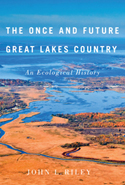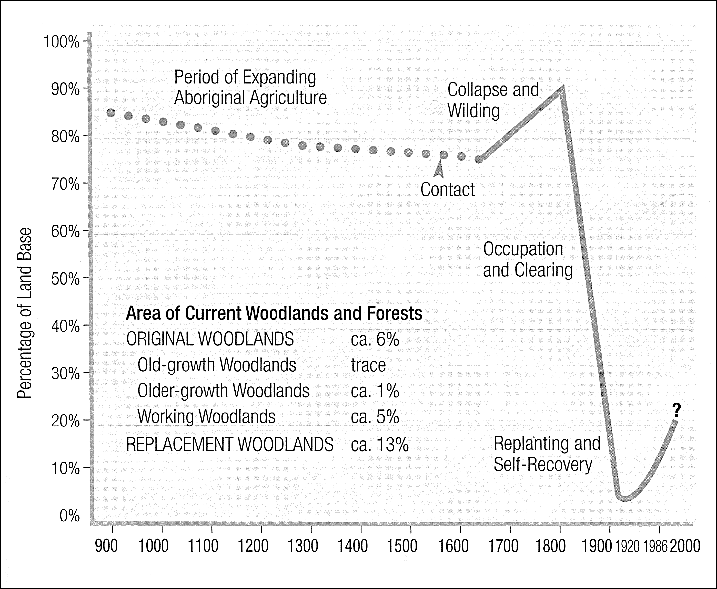by Sandy Richardson
 The Once and Future Great Lakes Country: An Ecological History
The Once and Future Great Lakes Country: An Ecological History
By John L. Riley
McGill-Queens University Press, 2013
The Once and Future Great Lakes Country is a comprehensive history of the environmental changes that have taken place in the Great Lakes region in the 11,000 years since the last ice age. It makes a fascinating, if sobering, story.
Most of the story, by necessity, is about what has taken place in the roughly four centuries since contact between the indigenous population and the first Europeans, as that is the period for which we have written records (albeit from the perspective of the newcomers). Those first Europeans were amazed by the new land they had arrived in. The region’s magnificent forests and prairies, and abundant fish and wildlife were almost beyond belief compared to the Europe they had left. They called this new land an earthly paradise, but, in seeming contradiction, soon set about trying to recreate Europe. Some of the changes they brought were unintentional and some by design; most had far reaching effects.
Contact ushered in an era of disease and warfare that greatly reduced the indigenous population in the lower lakes region; this resulted in about two centuries of rewilding as the native agricultural lands returned to forest. Then, starting in the early 1800s the region was opened to settlement and what followed was wholesale depletion of resources and rampant development; the percentage of the land covered in forest dropped from 90% to less than 10% in a century. The accompanying chart, taken from the book, illustrates the rapid and dramatic changes in the forest cover in the lower Great Lakes region in the last 500 years.

John Riley looks in detail at the taking of wildlife, the clearing of forests and taming of the land in general, the largely unintended consequences of invasive species, ever-increasing urbanization, and climate change in the Great Lakes area – particularly the lower Great Lakes, as this is where the most dramatic changes have taken place. Although much of this ecological history has been discouraging, to say the least, Riley’s conclusion is remarkably hopeful, noting the current interest in conservation and re-wilding, even as we relentlessly expand our cities. This is seen in the increase in forested land since about 1920 shown in the chart.
The author has worked as a botanist, geologist, ecologist and conservationist with the Royal Ontario Museum, the Ontario Geological Survey and Ontario Nature, and is currently the senior science advisor at the Nature Conservancy of Canada. He is uniquely qualified to write an ecological history of the Great Lakes country. He also lives in the region he writes about, on an old farm in Mono – a farm that he is working to return to a more natural state. He often illustrates his general themes with observations and experiences on his own land.
Be forewarned, The Once and Future Great Lakes Country is not light reading; it is a scholarly and well researched book, with 350 pages of text, 32 pages of maps, charts and illustrations, 62 pages of endnotes, 48 pages of references, and fully 28 pages of index. It is, however, a fascinating and revealing book that is well worth the effort to read, especially for anyone interested in the ecological history of the land that most of us call home.
